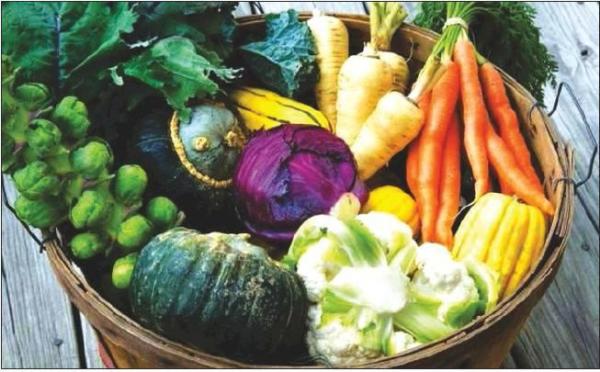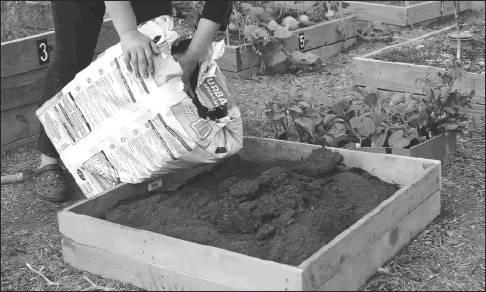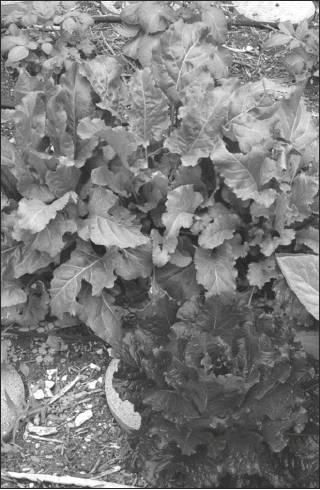The winter garden
December can be a quiet month in the garden, or a crazy month, don’t forget that two years ago we had a surprise snow in December. Still, we tend to think that December is a lazy month for the gardener, but there are more things to do in the central Texas garden around the Holiday season than you might think. As we quickly approach the shortest day of the year, we have fewer and fewer daylight hours to get our garden chores finished but that’s no problem because living in our part of the world means that we can garden all year long, and that makes things easy.
I hope you will seriously consider planting a winter garden this year, if not for yourself then as a unique and fun gift for your family. Planting your first winter garden can be as easy or difficult as you want to make it. For an easy garden, I recommend using wood, stones, logs, or whatever you have on hand to make a quick and easy raised bed for your initial winter garden.
After building your bed the fun starts. Fill it with a few bags of good garden soil and then start planning what you want to plant. Most local nurseries carry cold hardy vegetables all winter long that are ready to be popped into the garden, so you don’t have to worry about sprouting seeds.
Of course, as you are deciding what to plant, remember that there are a few maintenance tasks for your winter garden. We usually do not get a very hard freeze in the winter, but it is possible right up into springtime. So being prepared to add extra mulch or to water in advance of a deep freeze will keep you a step ahead of Mother Nature and protect your plants. This is especially important if you want to enjoy fresh, healthy produce throughout our cold season – I love nothing more than a fresh garden salad served with Christmas dinner!
Winter, of course, is cool season crop time. Greens, such as arugula, Asian greens, spinach, collards, lettuce, Swiss chard, mustard and kale, thrive. Root crops, such as carrots, beets, onions and radishes, grow well. Brassicas, such as broccoli, cauliflower and cabbage, form large heads. Legumes, such as fava beans and peas, grow and flourish. All these cool loving vegetables have better flavor and texture now than if you tried to grow them during the heat of spring or summer.
In our area, we have a broad palette of cool season crop options, plant what you like and try something new. You may be surprised by the new things you’ll find to grow. Look for varieties adapted to our region and for winter for example, ‘Winter Keeper’ beet, January King’ cabbage and ‘Royal Chantenay’ carrots are some varieties adapted to winter growing conditions.
Winter vegetables not only provide you with food, they also look beautiful when planted right in the middle of your established landscape. Also, there’s really no need to plant vegetables in a separate garden area, be it traditional rows or in raised beds, unless you just want to. A grouping of lettuces, Swiss chard, kale, and broccoli look right at home beside fall asters and Salvia greggii in your front yard flower bed. Intersperse them among your perennials, which will live below ground all winter anyway, so there won’t be any competition for space. Just be careful in digging around the roots of your established plants and they will fill that dormant space with beauty that you can eat!
Keep just a few of the following things in mind and you will be rewarded with a wonderful and tasty bounty.
First, protect your plants from frosts, keep in mind that while some greens are fairly cold hardy some are not. Romaine lettuce grows very well in our area and does well in the cold because of its thicker leaves, but it still needs protection from freezes. More tender greens such as leaf lettuce aren’t quite as hardy. Cover the plants with frost blankets or use fabric row cover secured to hoops, when necessary.
Second, when harvesting your veggies, try to gather your salad greens in the cool of the morning. Use the cut and come again method of harvesting most varieties of lettuce. Or harvest the whole plant. Romaine forms a crispy tubular head, so that should be left to mature properly. After harvesting, rinse the lettuce and other salad ingredients with cold water and dry. Salad dressing clings to dry lettuce leaves better than wet leaves. If storing lettuce for a few days, put it in a sealable bag or bowl in the refrigerator without washing or cutting it first.
Thirdly, while everyone worries about insects and diseases in any garden setting, I don’t because I know that most insects and diseases will not do very well in cold weather so don’t fret too much about it. Various worms, including cutworms, cabbage loopers and armyworms can be a problem for lettuce plants even in the cold, but they are easily handled. Pluck them from the plants by hand or with a hand vacuum. If the problem persists use Bacillus thuringiensis to treat for them. Bt is a very good biological control of worms. It may take a few days, so don’t be impatient. After steady rains, reapply it. When possible, I recommend planting various herbs and flowers amidst lettuce to confuse the garden pests. Also, practicing crop rotation and keeping your garden clear of old, spent plants helps keep the pests and diseases at bay.
Downy mildew is the most prevalent disease on lettuce. It is usually caused by continued wet conditions or lack of good air flow among the plant leaves. Use proper plant spacing to ensure that there is plenty of air flow in and around the plants to help keep them dry. Foliage rot can also be a problem during extended wet conditions. Provide good drainage and healthy, rich soil to help prevent it. Moreover, tip burn may result from a change in the moisture relationship between the plant and the soil. It causes the lettuce to die back at the edge of the leaves. Clip any brown leaves off. Frequent light watering helps to prevent this and some varieties of lettuce are resistant to it.
Finally, salad garnishes from your garden such as edible flowers, herbs and their blooms, and certain leaves of flowers and dandelions add a beautiful, interesting touch to the dinner plate. Orange nasturtiums, as well as their leaves are edible and when paired with bright yellow calendula make a so-so salad very beautiful. The lavender petals of borage also delight the eye and palate. Arrange rose petals, violas, and pansies on the plate as well. The vegetable garden offers blooms of peas, beans and endive. Always harvest your blossoms after the dew has dried from them. Be sure not to use any greens or flowers growing wild, unless you are familiar with what are safe to eat. Never consume flowers of ornamental plants that have been treated with pesticides.
Most important of all, enjoy your winter garden with all those you love!





